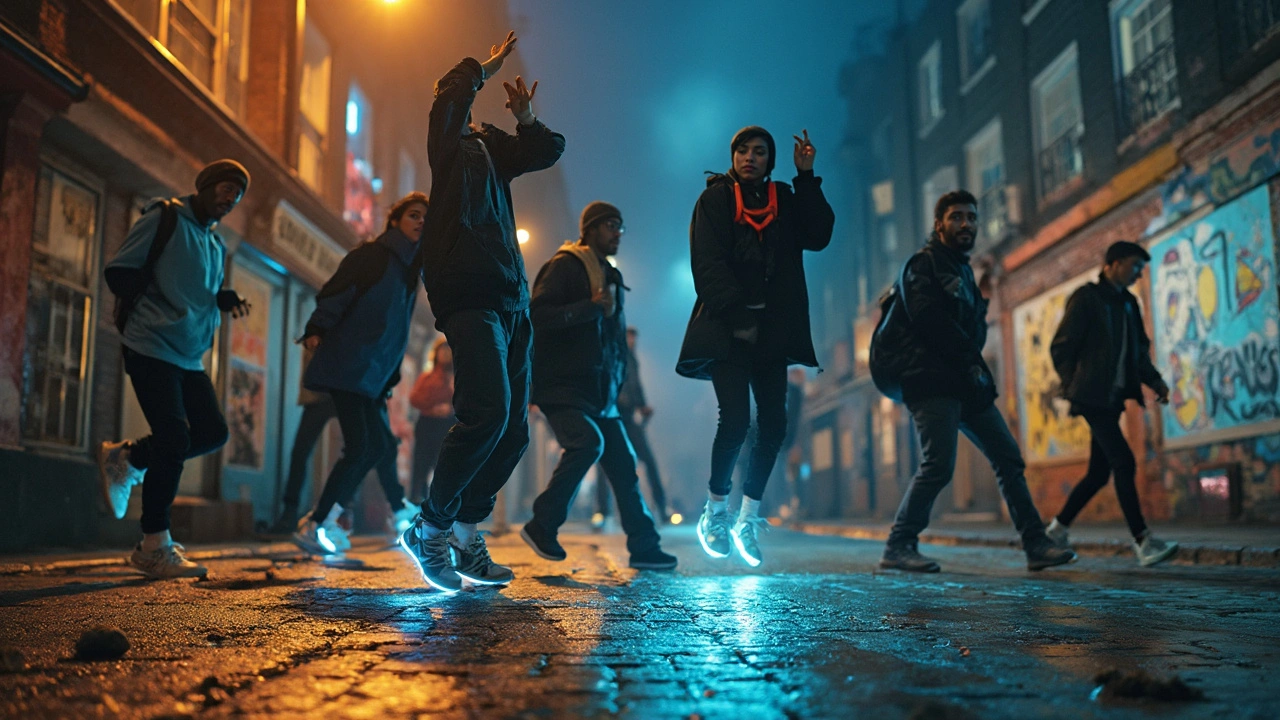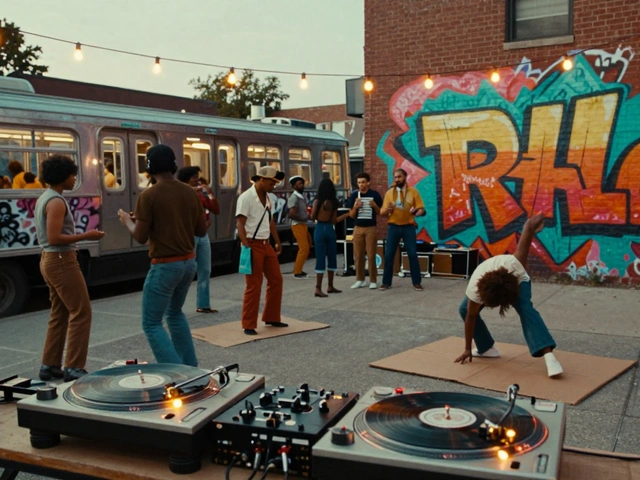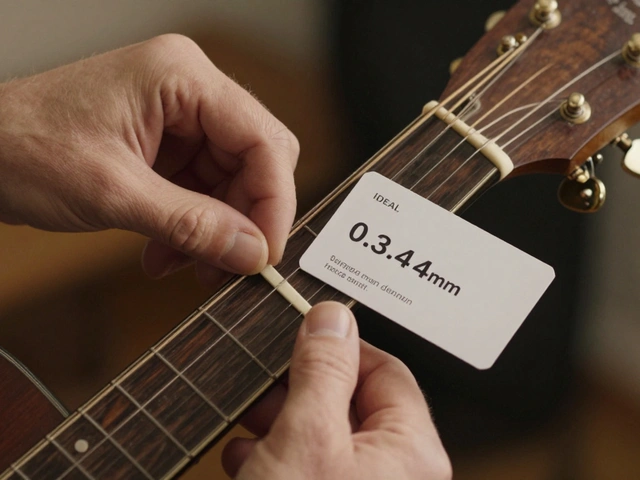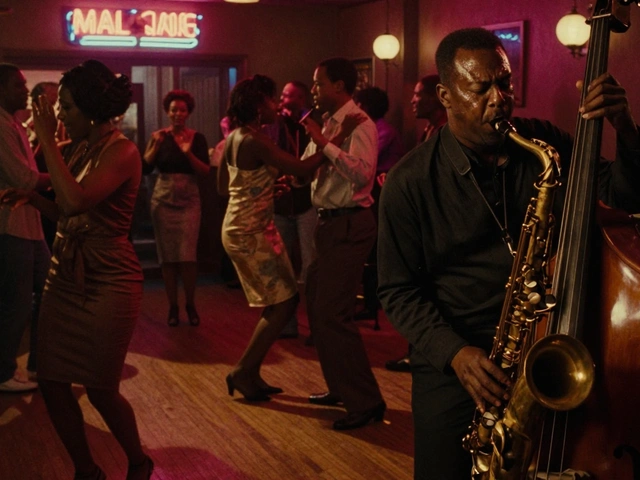Ever seen someone move so sharply you have to watch their feet twice to believe it? That’s dubstep dance. It’s not your regular hip-hop or breakdance. Dubstep pushes dancers to match every beat, glitch, and wobble in the music with moves so sleek it almost looks unreal.
Dancers aren’t born with that level of precision. Most start by obsessing over hours of YouTube tutorials, often slowing them down frame by frame just to catch a perfect wave or pop. The kicker? You don’t need crazy flexibility or classic ballet training—just a bit of rhythm, patience, and a willingness to experiment with weird body shapes.
If you’ve got a love for tech, you’ll feel right at home here. Dubstep dance is all about syncing up with the music’s electronic sound, hitting details that nobody even thought of moving to before. A lot of routines are made at home in front of a phone camera, then blow up on social feeds the next day. Anyone with a good idea and some guts can go viral.
- The Dubstep Dance Boom
- Breaking the Mold: What Makes It Different
- Creative Moves and Mind-Blowing Techniques
- Trendsetters and Viral Moments
- Dubstep Dance for Beginners: Tips and Tricks
- What’s Next for Dubstep Dance?
The Dubstep Dance Boom
This whole dubstep dance movement got its big push back in the early 2010s when random dance clips started popping up all over YouTube and later exploded on TikTok. One of the videos that really kicked things off was Marquese "Nonstop" Scott's "Pumped Up Kicks" dubstep remix. That video racked up millions of views because people just couldn't believe someone could move like that. It was sharp, robotic, and somehow flowed perfectly with all those wild electronic beats.
You'd think this level of dance started in some high-tech studio, but most of it came from people recording next to their couches or even on sidewalks. Young dancers from all over the world picked up the style just by watching and copying. There isn’t a strict set of rules or uniform background—dubstep is kind of open source, so everyone puts their spin on it.
One cool thing about the dubstep dance boom is how it invited folks who weren’t typical “dance kids” to join in. Instead of needing years of jazz or ballet, people taught themselves by watching clips and trying odd moves in their bedrooms. The global lockdowns during 2020 supercharged this. With dance studios closed, social media became the new classroom, and suddenly, there were thousands of short, high-energy tutorials for anyone wanting to jump in.
| Year | Dubstep Dance YouTube Views (Top Videos) |
|---|---|
| 2011 | 2 million+ |
| 2015 | 25 million+ |
| 2020 | 90 million+ |
That kind of reach is mind-blowing for any dance style. It’s now common to see local dance clubs host dubstep dance nights, and competitions pop up across the world. People are down to learn or battle using only their phones. It’s not just a trend—it’s reshaping what it means to dance in the digital era.
Breaking the Mold: What Makes It Different
So, what really sets dubstep dance apart from other styles? Instead of focusing on long, flowing moves like traditional street styles or hip hop, dubstep is all about sharp isolations, sudden pops, and stops that line up exactly with the strange sounds in the music. Those robotic steps, chest pops, and precise hand whips? You won’t find that anywhere else in dance culture.
Dancers use crazy levels of control over their bodies, sometimes isolating just a single finger or shoulder. This makes even simple routines look technical and out of this world. Unlike classic breakdancing, there aren’t fixed rules or set moves—you get to invent. That’s why some routines go viral: nobody has ever seen the combo of moves put together before.
What’s also cool is dubstep’s tight connection to technology and visuals. Dancers will rehearse moves that sync up with LED suits, light effects, or even AR filters. In big competitions like World of Dance, dubstep groups get top scores for creative use of visuals paired with sharp choreography.
- Dubstep dance is built around music details—those little glitches, bass drops, and weird vocal chops.
- The style encourages mixing and mashing up moves from animation, robotics, tutting, popping, and waving.
- It isn’t about sticking to tradition—it’s all about pushing what your body can do to new limits.
This idea of freedom means people with different backgrounds—skaters, gamers, even self-taught teens from TikTok—jump in and make their mark. There’s a real energy watching fresh routines blow up online. Just compare how popular #dubstepdance is on social media compared to older dance styles in the last five years:
| Dance Style | Top Hashtag Views (TikTok, 2025) |
|---|---|
| Dubstep Dance | 2.1 Billion |
| Breaking | 350 Million |
| Pop Locking | 210 Million |
The numbers don’t lie. Dubstep dance is more than just a trend—it’s changing the way people think about movement entirely.
Creative Moves and Mind-Blowing Techniques
When you watch someone own the dubstep dance floor, it's all about those signature moves. Think body waves, hitting, popping, gliding, and ticking. It isn’t random flailing. Dancers break down music’s smallest details—a snare, a bass drop, the glitchy bits—and make their bodies move like actual sound effects. Some folks call this 'musicality' — basically, moving in ways that feel like you're becoming the music.
Take “animation” for example. This trick makes dancers look like characters from a stop-motion movie. Each joint freezes for a split second before moving again, matching the music's hiccups. “Waving” is another crowd favorite. Dancers create a ripple that starts from their fingers, travels up the arms, and even down to their legs, holding the crowd’s attention without a single fancy trick.
Popping and ticking aren’t just cool words—they’re core to dubstep dance. Popping means quickly tensing and relaxing muscles to make your body ‘pop’ on every beat. Ticking means moving in sharp, jerk-like steps instead of smooth motions, giving off a robotic vibe that fits perfect with dubstep’s mechanical sounds.
- Gliding: Moving so slick it looks like you’re sliding across ice. Some dancers drop baby powder on the floor to boost the effect.
- Isolations: Keeping parts of your body still while only one area moves. Try moving just your chest in a circle, nothing else.
- Tutting: Like creating shapes and angles with your fingers, wrists, and arms (seriously, some routines look like high-speed origami).
Want numbers? The viral dubstep dance video from Marquese “Nonstop” Scott netted over 137 million views on YouTube since 2011, showing just how hungry people are for this high-energy style.
New to it? Record yourself, then play your video in slow motion to spot which moves need more work. Focus on matching your movements exactly with the sounds in the music instead of just following a beat. These little details make a big difference when you’re learning dubstep dance.
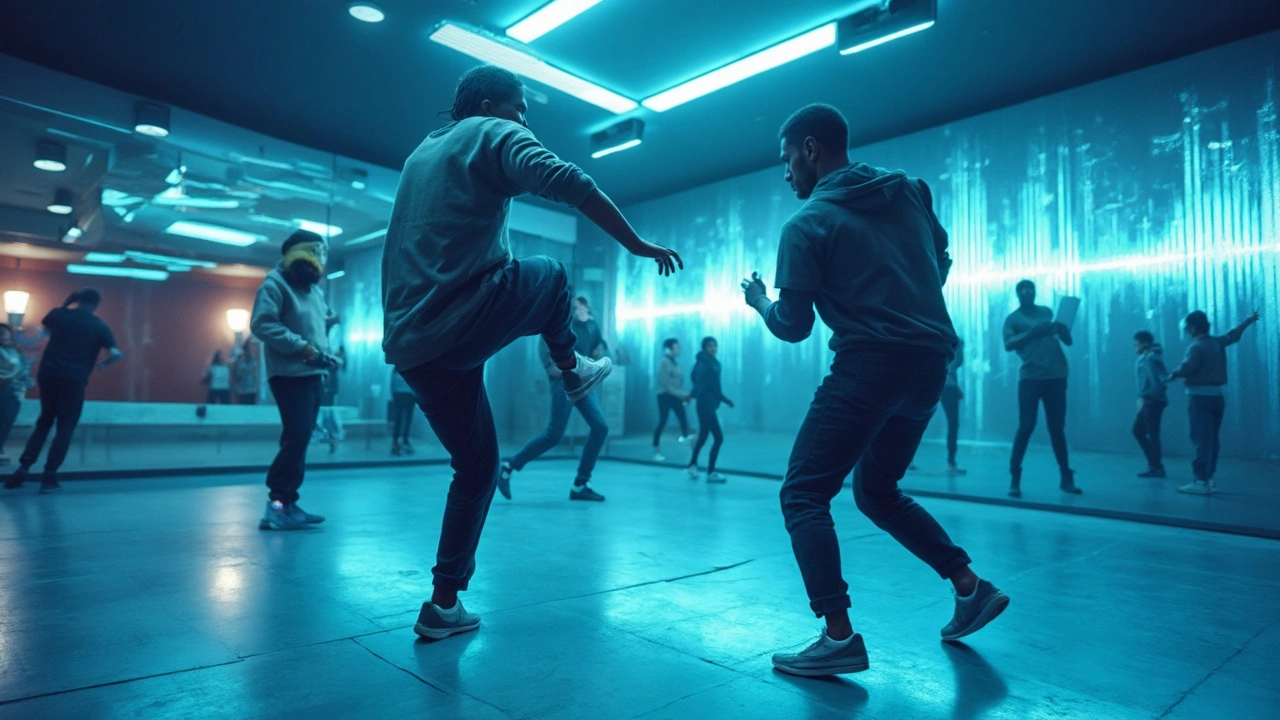
Trendsetters and Viral Moments
You can’t talk about dubstep dance taking over the scene without naming the people who made it blow up online. Two names you’ll see everywhere are Marquese Scott (aka NONSTOP) and Poppin John. Marquese’s “Pumped Up Kicks” dubstep dance video has raked in more than 140 million views since it dropped in 2011. That one video brought a brand new wave of dancers, all trying to figure out how he made his arms flow like water and then snap robotic the next second.
Then there’s Poppin John, who went from street battles to shows like NBC’s World of Dance. His dance style is a mix of popping and dubstep, and he’s famous for breaking down some of the toughest moves into step-by-step tutorials. These influencers teach thousands of people every year just through their online presence.
Dubstep isn’t just a solo act either. The group RemoteKontrol (now Dragon House Crew) made group routines go viral. Each member contributes a crazy unique style, and they show how dubstep can work as a team thing, not just for individuals. Their videos have picked up millions of hits and gotten them invites to tv talent shows.
Want some numbers? Here’s how dubstep blew up across platforms:
| Creator/Group | Most Popular Video Views | Main Platform |
|---|---|---|
| Marquese Scott | 140M+ | YouTube |
| RemoteKontrol / Dragon House | 25M+ | YouTube |
| Poppin John | 10M+ | YouTube |
Music festivals and dance battles have pushed dubstep dance even more. If you scroll TikTok or Instagram Reels, you’ll spot new viral clips every week, with people of all ages giving it a try—from teenagers in their bedrooms to grandparents nailing the basics at family parties. The wild part? You don’t need a fancy studio to go viral; a decent camera and killer moves can get you noticed.
Tip: If you’re aiming to catch some of that viral energy, keep it short, use popular dubstep tracks, and always add your own twist. Don’t be shy about mixing in other street dance trends—the more unique, the better shot you have at turning heads.
Dubstep Dance for Beginners: Tips and Tricks
If you’re new to dubstep dance, don’t sweat it. Nobody starts out looking like those viral TikTok dancers. This style is more about catching the music’s rhythm and nailing the basics than memorizing a thousand moves. It’s about small wins and a truckload of patience.
Here’s what actually helps beginners get better at dubstep dance:
- Start with the music: Listen to a range of dubstep tracks. Pick ones with a strong beat and clear “drops.” Skrillex, Zeds Dead, and Virtual Riot are solid names to try, since their tracks often have obvious rhythms perfect for beginner routines.
- Master the basics first: Get comfortable with the wave, pop, lock, and bounce. Practice the ‘robot’ to get control over your muscles (it looks easy, but it’s trickier than it seems!).
- Record yourself: Seriously, camera feedback works wonders. You’ll notice stiff spots and start syncing your moves with the music’s smallest details.
- Slow-mo practice: Dubstep can get fast, but learning moves in slow motion makes everything cleaner. Most top tutorials online recommend practicing each step super slow, then speeding it up.
- Join online groups or classes: There are tons of Reddit threads, Discord servers, and Instagram communities where people swap tips and break down new trends.
- Drill footwork separately: Most beginners skip this and it shows. Take a separate 10 minutes in each session to drill sliding, toe-tapping, and the basic glides you’ve seen in viral dubstep dance clips.
Here’s a quick chart showing the most common struggles new dubstep dancers run into, based on 2024 survey data from an online dance community:
| Common Struggle | Percent (%) of Beginners |
|---|---|
| Keeping rhythm with fast beats | 52% |
| Isolating specific body parts | 47% |
| Remembering choreography | 29% |
| Staying relaxed and fluid | 39% |
If you hit a wall, just change up your practice routine or try a different track. Most people see big improvements after their first couple of months—with friends even recognizing the signature dubstep bounce. Keep at it, and don’t be afraid to mess up or look a bit silly. That’s actually how almost every dubstep dance success story starts.
What’s Next for Dubstep Dance?
Dubstep dance isn’t just a trend stuck in 2010. It's evolving fast, and it’s not showing any sign of fading. If anything, it’s picking up momentum as more dancers and choreographers find unique ways to use dubstep music and style in their routines. Put simply, what’s coming next is more creative, high-energy, and surprising than ever.
First, the online world is a huge driver. Dance battles happen live on Instagram. Viral #dubstepdance challenges push dancers to innovate, and new faces pop up every week. In 2024, TikTok reported over 2.8 billion dubstep-related views, with creators using effects that sync video edits to the music’s glitchy beats. So if you want to keep up, get comfy recording and sharing your own combos online.
Collabs are also changing the game. Street dancers team up with robotics engineers to add LED suits or motion-sensor tech to their acts. Expect to see more live shows where tech and dance blur together—even music festivals now book dubstep dancers for crowd hype or digital mixed-reality performances.
| Dubstep Dance Stat | 2023-2024 Data |
|---|---|
| Dubstep Dance Videos Uploaded (TikTok, IG, YT) | Over 15 million |
| Average Views per Viral Dubstep Clip | 400,000+ |
| Dubstep Dance Workshops Hosted Globally | 2,700 |
Here’s what to watch for if you want to stay ahead:
- Fusion styles — Dancers blend dubstep dance with popping, krump, or even ballet. Trying new mix-ups is the norm now.
- Virtual workshops — Top names in dubstep dance teach classes from their living rooms, so you can learn fresh moves without flying to L.A.
- Wearable tech — Expect more light suits, VR headsets, and gear that lets you literally “see the music.”
- Artistic storytelling — Routines go beyond just cool tricks. Dancers craft stories or deliver messages through each step and glitch.
If you’re thinking about getting into dubstep dance, now’s honestly the best time. The community is open, always looking for new talent, and totally obsessed with pushing the limits. It doesn’t matter if you’re a street dancer, a casual fan, or you just like to move to a wild beat—there’s space for you here.

